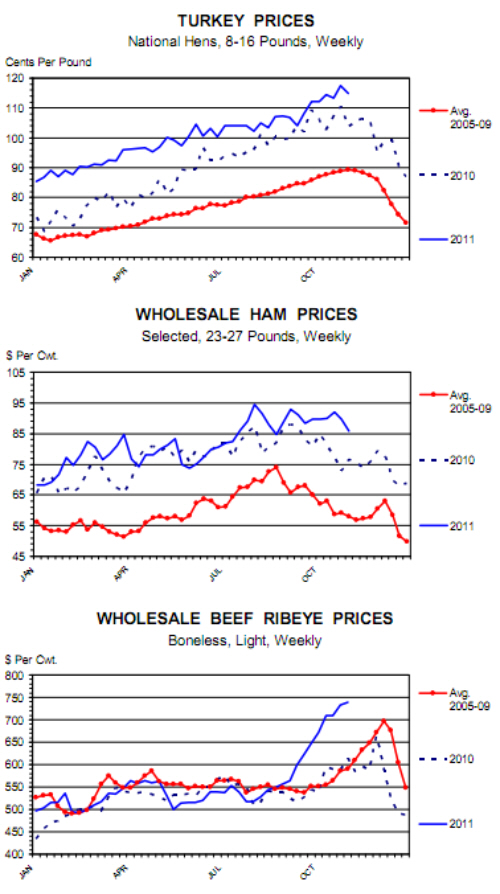



CME: What Drives Seasonal Price Variations?
US - We mention seasonal price variation on a regular basis in these pages but what exactly drives those variations, ask Steve Meyer and Len Steiner.The dictionary defines season as “a division of the year marked by changes in weather, ecology and hours of daylight.” Thus something “seasonal” has to do with these divisions of the year. Of course, we have four named seasons but those are arbitrary divisions based on differences in weather and, in reality, the orientation of the Earth’s axis toward the sun.
In economics in general and the livestock/ poultry businesses in particular, we apply different divisions – usually months or weeks – to measure seasonal variation. Of course, one reason that seasonal variation is so important in agriculture is that some agriculture events happen only once per year.
Winter wheat harvest is in the summer, corn harvest is in the fall, roughly 73 per cent of the beef cows will calve in the spring.
Other activities, such as farrowing pigs and hatching chickens and turkeys occur year-round. But even those can be more or less efficient depending on the season of the year. Farrowing rate (i.e. litters born per female bred) and litter size in pigs is the prime example – these are better in the spring and early summer due to cooler temperatures when breeding occurred four months prior.
Seasonal supply variation is critical. At the very least, it imposes carrying costs on storable commodities. And, for commodities such as meat and poultry, which are technically storable but whose cost of storage is very high relative to value, variation in seasonal production drives variation in seasonal consumption and negatively correlated seasonal price changes.
But not all seasonality is supply-driven. There are some calendar-based occurrences that impact demand and drive substantial price variation. Three examples appear below.
The clearest cut example of seasonal price variation, the authors believe, is that of hen turkeys. These are the whole birds that are favoured for US Thanksgiving meals.
Even though the industry is heavily geared to store hen turkeys for Thanksgiving use and produce more hen turkeys in the fall of each year, the planned seasonal supply changes do not offset demand pressure which drives wholesale turkey prices steadily higher through early November. Hen turkey prices have been higher than last year and the five-year average all year and hit a record high the week of 29 October. Last week’s decline very likely marks this year’s peak for hen turkeys.
Ham prices are driven by the same holiday buying but the peak occurs earlier due to processing time and the fact that hog supplies increase in the fall. So, seasonal pork output changes are large enough to offset some of the upward seasonal demand pressure. Note that ham prices have held very firm so far this year – an item of counterseasonal strength that has supported hog prices.
Finally, beef ribeyes show an abrupt seasonal pattern late in the year as buyers prepare for Christmas and New Year’s celebrations. This rally is usually supported by lower beef output during November and December. This year’s ribeye rally started very early and may be hitting an early peak.












